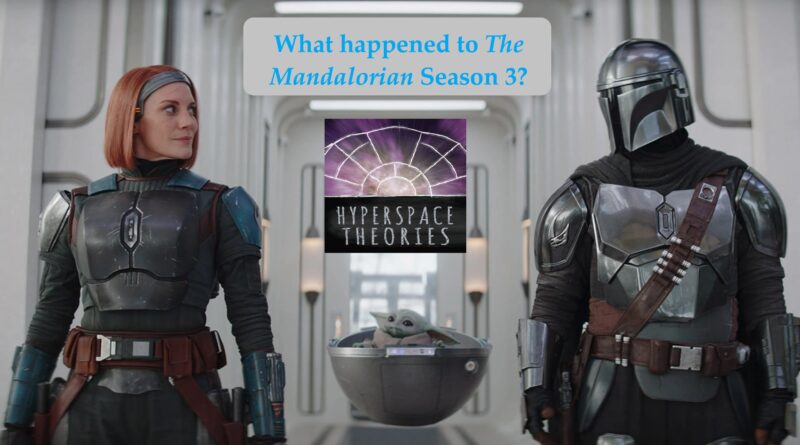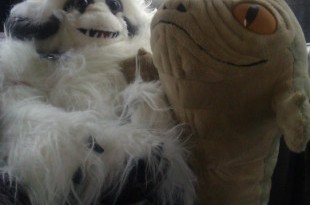Hyperspace Theories: The Inconsistencies of Mandalorian Season Three
On the latest episode of Hyperspace Theories, Tricia Barr and B.J. Priester discuss Chapters 20 to 24 of The Mandalorian, the five episodes comprising the middle and end of Season Three. (In our previous episode we talked about Chapters 17 to 19, the trio that began the season.) Overall, the theme of our analysis is the inconsistencies that seem to pervade Season Three from start to finish.
Despite that dynamic, we found much to enjoy and praise in Season Three. After the first three episodes focused on themes of identity, the remaining five episodes carried them forward on multiple levels. Bo-Katan’s character arc reaches fulfillment in her alliance with the Armorer, reacquisition of the Darksaber, regaining leadership of her erstwhile fleet, and leading the reconquest of the planet Mandalore. The Darksaber is destroyed, but a new symbol of unity is found: Bo-Katan, fulfilling her declaration to Moff Gideon that “Mandalorians are stronger together” during their climactic showdown, joins the Armorer to reignite the Great Forge. The discordant factions have set aside their differences for a greater collective purpose. Grogu, too, has synthesized his Jedi training and Mandalorian family, breaking up a fight between Mandalorians, using the Force for defense in combat, and formalizing his adoption as Din Djarin’s son (with the Armorer bestowing the name Din Grogu in recognition).
In other ways, however, Season Three struggles with inconsistency in the plotlines and character arcs. Although Din nominally retains the role of titular character in The Mandalorian, he is given a passive role with no meaningful character development after Chapter 18. Perhaps this season would have been better titled as The Book of Bo-Katan to more accurately convey the story being told. Similarly, we evaluate inconsistencies in the portrayals of Bo-Katan and Grogu over these five episodes, as well as problems with the chronology of the series (both in-universe and through creator interviews), especially in conjunction with Chapters 5 and 6 of The Book of Boba Fett. From these dynamics within the story itself, we speculate about the creative process behind these episodes and wonder if key ideas were modified, eliminated, or significantly reworked during the development or production process following the conclusion of Season Two of The Mandalorian.
Ultimately, while Season Three of The Mandalorian offered a good story and some fun episodes, it would have benefited from stronger writing and more consistency in the storytelling. With Andor demonstrating how skillful Star Wars series on Disney+ can be, The Mandalorian and related shows must do better to measure up.
Related Links:
- Fangirls Going Rogue Episode 23.7: Best of Star Wars Celebration Europe
- Fangirls Going Rogue Priority Transmission #27: Star Wars Visions Volume 2 Press Conference
- Skywalking Through Neverland Episode 415: Star Wars Celebration Europe 2023 Recap
- Star Wars Celebration Europe 2023: Disney Parks (FANgirl Blog)
- Star Wars Celebration Europe 2023: Young Jedi Adventures (FANgirl Blog)
- Star Wars Celebration Europe 2023: The Bad Batch (FANgirl Blog)
- Star Wars Celebration Europe 2023: Star Wars Visions Volume 2 (FANgirl Blog)
- Star Wars Celebration Europe 2023: The Women of Ahsoka (FANgirl Blog)
- Hyperspace Theories: The Success of K-Pop Demon Hunters - September 11, 2025
- Hyperspace Theories: ANDOR’s Point of View - August 13, 2025
- Hyperspace Theories: Bad Luck Ghorman - June 2, 2025










